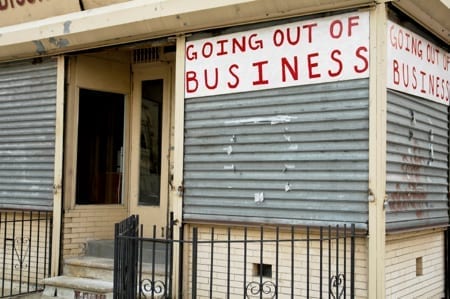we have answers.
Businesses don’t go bad overnight. There are warning signs, usually well ahead of time.
Experienced Directors and business advisors know this. They also know that when the signs of trouble are identified early and the corrective action is taken, there is a much better chance of turning things around.
And there’s never just one fatal flaw that causes a business to fail. Typically more than one of the following warnings signs are evident:
1. Over-Diversification
Businesses sometimes feel their growth challenges are due to having ‘too many eggs in one basket’, and try to solve the problem by diversifying.
Unfortunately, they often di-worse-ify: The business spreads its managerial and financial resources too thin. It then becomes vulnerable to losing not only its market share, but also its competitive advantage.
2. Weak Financial Function
If you find signs of excessive debt, stringent covenants and inadequate equity capital, you should be worried. It often means the business has overextended its credit, inventories are accumulating, and fixed assets are underutilised.
And while the damage can be repaired with better working capital policies and decisions about using capacity, the business may instead try to grow its way out of trouble.
3. Poor Lender Relationships
Generally, a healthy business has a great relationship with its lenders, and the two communicate openly and often.
On the other hand, a business in trouble:
-
has closed or one-way communication
-
tries to conceal financial information
-
doesn’t return telephone calls from the bank
-
doesn’t file interim or periodic reports
Once a bank loses faith or confidence in management, they’ll usually move to protect their position by using an investigative accountant. That’s more than a sign that the business is in trouble. It’s a billboard.
4. Lack of Operating Controls
Operating a business without adequate mechanisms for reporting, accountability and responsibility is like flying an airplane without a control panel or a flight plan. You don’t know where you’ll end up, or what shape you’ll be in when you get there.
Yes, it might true that any decision is better than none. But basing those decisions on information that’s inadequate, untimely, or inaccurate can make a bad situation even worse.
5. Market Lag
If the business isn’t keeping up with the changes to products and the marketplace, it’s probably in trouble.
Perhaps its equipment, products or services are so out of date they’ve become obsolete. Or maybe it hasn’t kept pace with the needs of the marketplace, or how to distribute its products effectively.
Whatever the reason, it’s probably suffering from sagging sales and a declining market share as a result.
6. Explosive Growth
It’s counterintuitive, but It’s possible for a business to ‘grow broke’. Most would think that a business that’s growing rapidly must be pretty healthy. But often management overlooks the effects it has on the balance sheet and the cash needed to fund the expansion.
This kind of growth often involves high capital investment, including significant investments in research and development (R&D), capacity, and working capital. And it can quickly reach a point where there’s little (if any) margin for error.
With rapid growth there’s an overload of capabilities, not just in capital. Without the right preparation the business can become difficult (if not impossible) to manage.
7. Risky Customer Base
Whilst over-diversification can be a sign a business is in trouble, so too is a reliance on a few big customers for the bulk of the business’ revenue.
In 2012, Reed Constructions and the construction arm of St Hilliers were both placed in voluntary administration when major deals fell through. (Fortunately, St Hilliers managed to recover.)
So while the business shouldn’t be spreading itself too thin, make sure it doesn’t have any customers acting as a financial linchpin.
8. Family-Centric vs. Business-Focused Decisions
At first glance, a business that’s “family-owned and operated” may seem like a pretty safe bet. After all, it’s not just a business to them. It’s practically part of their heritage, and they wouldn’t do anything to jeopardise that.
Unfortunately, it can also mean that business decisions are being driven by emotion rather than logic, which is rarely a good thing.
These businesses can face other problems as well. Sibling rivalry has ruined many a privately-owned business, especially when deciding who should run the business after the founder’s retirement or death. And just as divorce can shatter people’s lives, it can also shatter the business.
9. Operating Without A Business Plan
Running a business without a plan is like jumping out of an aeroplane without a parachute. You may survive, but it will be a miracle if you do.
But often these plans exist only in people’s heads, or in a vague document that could be interpreted in a dozen different ways. And so, even though everyone is following ‘The Plan’, their actions could be completely different, and even contradictory.
And that leads to conflict, inefficiencies, and a kind of organised chaos.
What to do if you spot more that one of these signs
If you spot any of these warning signs in a business, corrective action needs to be implemented as soon as possible. If you see more than one of these signs, the management team and their advisors really do need to swing into action.
Get in touch with us if you’d like to discuss possible course of action in response to any of these issues.
In addition to the above 9 Signs, there is simply ‘bad management’. In our next post we’ll look at 6 Ways To Spot An Ineffective Management Team.


